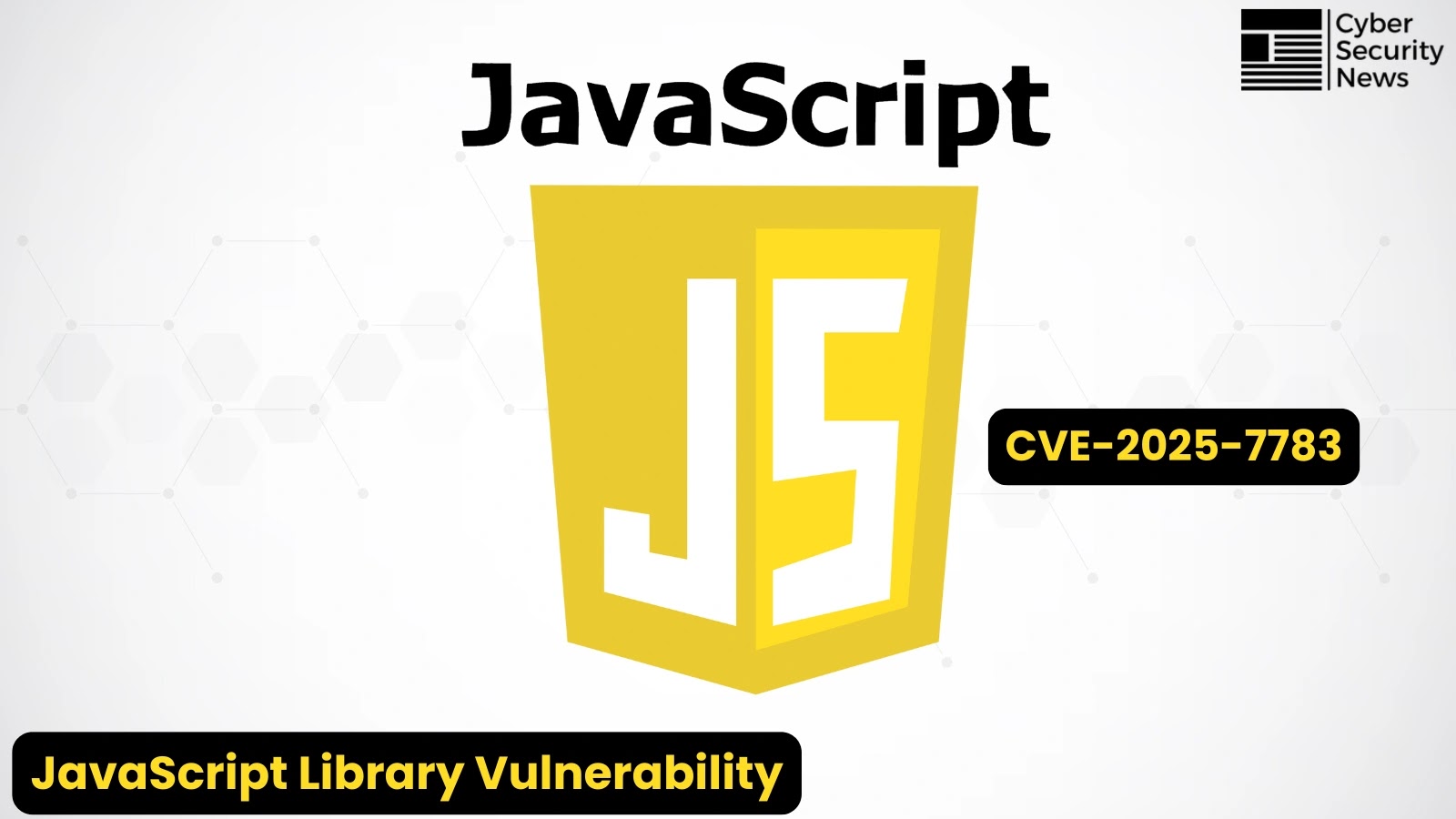
Critical Vulnerability in JavaScript Library Exposes Millions of Apps to Code Execution Attacks
Critical Vulnerability in JavaScript Library Exposes Millions of Apps to Code Execution Attacks
A significant cybersecurity threat has emerged, potentially impacting a vast array of applications. A critical vulnerability, now identified as CVE-2025-7783, has been discovered within the widely adopted JavaScript library for handling form data, known as form-data. This flaw could allow attackers to execute arbitrary code, compromising the integrity and security of countless systems. As expert cybersecurity analysts, we delve into the specifics of this vulnerability, its potential ramifications, and the essential steps organizations must take to mitigate this risk.
Understanding the CVE-2025-7783 Vulnerability
The root cause of CVE-2025-7783 lies in the form-data library’s method of generating boundary values for multipart form-encoded data. Specifically, the library utilizes the Math.random() function for this purpose. While seemingly benign, Math.random() is known to produce predictable sequences, especially when seeded or observed over time. This predictability is the Achilles’ heel in this scenario.
Attackers can exploit this predictability to manipulate HTTP requests. By anticipating or deducing the randomly generated boundary values, malicious actors can craft specially designed HTTP requests. This allows them to inject arbitrary parameters into the request, bypassing intended validation mechanisms and potentially leading to remote code execution (RCE). The implications are severe, ranging from data exfiltration and unauthorized access to complete system takeover.
Impact on Applications and Organizations
The form-data library is a foundational component for many web applications and Node.js projects that handle file uploads and form submissions. Its pervasive use means that millions of applications are potentially exposed to this critical vulnerability. Organizations relying on affected versions of this library face a significant risk of:
- Code Execution: Attackers can inject and execute arbitrary code on the server, leading to full system compromise.
- Data Exfiltration: Sensitive data stored on compromised systems can be accessed and stolen.
- System Disruption: Malicious code could disrupt normal application functionality or lead to denial-of-service conditions.
- Reputational Damage: Security breaches can severely damage an organization’s trust and standing.
The widespread nature of this library necessitates urgent attention from developers, IT professionals, and security teams across all sectors.
Remediation Actions and Mitigation Strategies
Addressing CVE-2025-7783 requires immediate and decisive action. Organizations must prioritize the following steps:
- Update the
form-dataLibrary: The most critical step is to update to a patched version of theform-datalibrary. Developers of the library have likely released a new version that addresses the predictable boundary generation issue by using cryptographically secure random number generators (CSPRNGs) or other robust mechanisms. Regularly check the official npm registry or project repository for the latest secure version. - Conduct Code Audits: Organizations should perform thorough code audits of their applications to identify all instances where the
form-datalibrary is used. This will help assess the full scope of potential exposure. - Implement Input Validation and Sanitization: While updating the library is paramount, robust input validation and sanitization on all user-supplied data remain crucial. This acts as a layered defense, reducing the impact of potential bypasses.
- Monitor Application Logs: Enhance logging and monitoring capabilities for web applications. Look for unusual request patterns, unexpected parameters, or any signs of attempted exploitation. Implement alerts for suspicious activities.
- Web Application Firewall (WAF) Rules: Deploy or update WAF rules to detect and block malicious HTTP requests that attempt to exploit this type of vulnerability. While WAFs are not a primary solution, they can provide an additional layer of protection.
- Security Awareness Training: Ensure development teams are aware of the importance of using secure coding practices, especially when dealing with critical components and random number generation for security-sensitive operations.
Tools for Detection and Mitigation
Several tools can assist in detecting vulnerabilities and implementing mitigation strategies:
| Tool Name | Purpose | Link |
|---|---|---|
| npm audit | Scans project dependencies for known vulnerabilities. | https://docs.npmjs.com/cli/v9/commands/npm-audit |
| Snyk | Developer security platform for finding and fixing vulnerabilities in code, dependencies, and containers. | https://snyk.io/ |
| OWASP ZAP | Open-source web application security scanner for automated and manual vulnerability testing. | https://www.zaproxy.org/ |
| Burp Suite | Integrated platform for performing security testing of web applications. | https://portswigger.net/burp |
| Web Application Firewalls (WAFs) | Protect web applications from common web exploits. (Provider dependent) | (Consult cloud provider or security vendor) |
Conclusion
The discovery of CVE-2025-7783 in the JavaScript form-data library underscores the constant need for vigilance in the software supply chain. Predictable random number generation, even in seemingly minor components, can lead to critical security flaws. Promptly updating affected libraries, implementing rigorous input validation, and maintaining an active security monitoring posture are indispensable for safeguarding applications against code execution attacks. Organizations that act swiftly to address this vulnerability will significantly reduce their attack surface and protect their digital assets.





